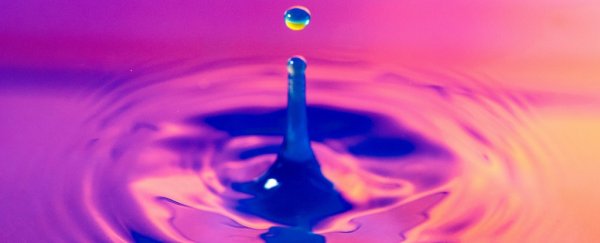Researchers in China have developed a new way to remove bacteria from water that they say is both highly efficient and environmentally sound.
By shining ultraviolet light onto a two-dimensional sheet of a compound called graphitic carbon nitride, the team's prototype can purify 10 litres (2.6 liquid gallons) of water in just one hour, killing virtually all the harmful bacteria present.
This type of technique for water cleaning is known as photocatalytic disinfection, and it is often talked about - and ardently researched - as an appealing alternative to current water filtration systems, such as chlorination or ozone disinfection, neither of which are particularly eco-friendly.
With the world facing a future of climate change and water scarcity, finding an environmental way to clean our drinking water is of the utmost importance.
"The future application of photocatalytic disinfection technology can significantly relieve clean-water scarcity and global energy shortage," explains senior author Dan Wang.
The way this technology works is remarkably simple. Various materials can be used as photocatalysts in water - which means they absorb light and speed up (or catalyse) the oxygen reactions that happen in water in the presence of certain wavelengths of light. These reactions produce molecules known as reactive oxygen species (ROS), which are great at killing microorganisms.
There are plenty of efficient metallic catalysts one can use for this, but unfortunately they shed metal residues into the water. Meanwhile non-metal catalysts, such as nanotubes and graphene, are safer, but less efficient than their metallic counterparts - they don't produce enough ROS to get the job done.
Now, researchers at the Chinese Academy of Sciences in Beijing and Yangzhou University (YZU) in Jiangsu think they have at last found a practical, efficient and non-toxic solution.
The key is a synthetic, ultra-thin material with all the right properties to absorb light and produce enough ROS to kill bacteria. Graphitic carbon nitride has attracted ever-increasing attention over the years because of its potential for energy storage.
Using only light, the researchers found that two-dimensional sheets of this material can rapidly purify polluted water. An initial test saw the deaths of 99.9999 percent of all Escherichia coli bacteria in a 50 millilitre sample within just 30 minutes.
That's five times faster than any other metal-free photocatalyst we currently know of. Plus, the reaction only consumes a tenth of the catalyst at a time.
"This remarkably high efficiency is also comparable to that of the best metal-based photocatalysts," the authors write.
The efficiency comes from the unique structure of this material - the researchers loaded the edges of the sheets with carboxyl and carbonyl molecules, which drew additional electrons to these edges.
Hit by ultraviolet and visible light, this whole setup efficiently produced a ROS we all know as hydrogen peroxide. Once in the water, this antiseptic effectively kills bacteria by breaking through their cell walls and wreaking havoc on their insides, before safely dissociating into water and oxygen.
The best part is that the authors say a system like this would not be hard to reproduce on a larger scale. Graphitic carbon nitride can be easily synthesised at a low cost, and the system itself is simple and inexpensive to put together.
"The scale-up for both the catalysts and the device is not difficult," says Wang.
It's a good first step, but the prototype won't be enough on its own to purify water from other contaminants.
"Purification needs other devices for removing heavy-metal ions, adjusting pH, and removing residue," says Wang.
"We need to combine our system with others to meet water-purification requirements."
This study has been published in Chem.
